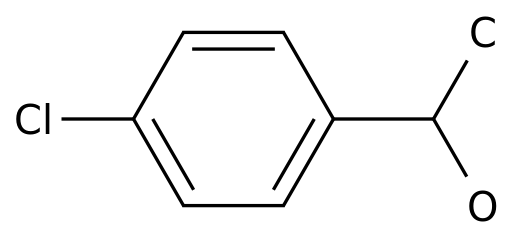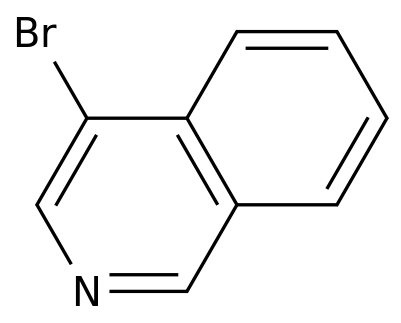-
Categories
-
Pharmaceutical Intermediates
-
Active Pharmaceutical Ingredients
-
Food Additives
- Industrial Coatings
- Agrochemicals
- Dyes and Pigments
- Surfactant
- Flavors and Fragrances
- Chemical Reagents
- Catalyst and Auxiliary
- Natural Products
- Inorganic Chemistry
-
Organic Chemistry
-
Biochemical Engineering
- Analytical Chemistry
- Cosmetic Ingredient
-
Pharmaceutical Intermediates
Promotion
ECHEMI Mall
Wholesale
Weekly Price
Exhibition
News
-
Trade Service
Text . . . Ke Zhikang so-called stem cells, refers to from the embryo, fetus or adult, with a certain conditions of unlimited self-renewal and proliferation of differentiation ability of a kind of cell, it can produce phenotypes and genotypes and their own exactly the same subcellular, but also produce the composition of the body's tissues, organs of the specialized cells, including differentiated progenitor cells.
stem cells can be broadly divided into embryonic stem cells (ESC), adult stem cells (ASC) and induced pluripotent stem cells (iPSC).
stem cell drugs are stem cell products developed according to the drug path.
generally go through two closely related stages, the drug registration declaration (i.e. the application for clinical trial of a new drug, in the short name IND) and the drug marketing license application (NDA).
in the United States, the FDA separately reviews and approves applications for listing of biologics, including cell products, specifically known as BLA.
stem cell products can only be commercially produced and marketed after they have passed regulatory approval and obtained listing license qualification (for short, listed and approved), so stem cell products can only be considered "real" stem cell drugs that patients can use with confidence only after they have been approved for market and the product has been turned into a drug.
the mechanism of the role of stem cells and their in vitro culture products as drugs imported into or implanted in the human body is generally two.
one is to use its differentiation potential or in vitro cultured cell sheets to repair or regenerate damaged tissues and even organs to avoid organ failure. the second
is the modulation of specific cytokines secreted by stem cells and the change of the microenvironment of the disease, so that the disease advances towards the direction of rehabilitation.
these two points are the two main advantages of stem cell drugs for clinical treatment. in addition,
stem cells themselves are the ideal vehicle for gene therapy for diseases.
because of the above-mentioned excellent characteristics of stem cells, the research and development and listing of stem cell drugs around the world has been the focus of attention, often become the media and the public's attention and hot spot.
because of the range of tissue precursor cells or progenitor cells, such as keratin cells, fibroblasts, and non-fat large cartilage cells have a considerable degree of differentiation and proliferation capacity, so it is broadly classified as the target of stem cell drug research and development.
this article summarizes the latest global stem cell drug registration approval and listing status for readers.
The status of China's stem cell drug registration and approval is very regrettable, so far, China has not been a "real" stem cell drug approved for the market, the reasons for this situation will be covered in the following.
Despite this, the domestic stem cell drug research has been a hot spot, especially after the State Drug Administration in 2018 to resume the acceptance of stem cell drug registration declarations.
1, registration declaration acceptance analysis has been accepted domestic stem cell drug registration declaration varieties and indications see table 1 and 2, and registration of the acceptance time statistics can be found in the following figure 1 and Figure 2.
1) Varieties and indications can be seen from the table below 1, China has so far accepted a total of 25 stem cell drug varieties of registration declaration;
according to the source and type of varieties statistics, the cumulative involved in the declaration of 25 units, because some units declare multiple varieties, some varieties by 2 units jointly declare, excluding duplicate statistics after the actual declaration of 24 units.
of the 25 received varieties, umbilical cord-filling stem cells (UCMSC) from perinatal tissue sources were the largest, reaching 12, and the second-largest were bone marrow interstitial stem cells (BMSCs) from adult tissue sources, 4 of which together accounted for 64% of the total number received; (ADSC) and the nature of unknown interstitial stem cells (MSC) each 2, the other species of 1 each, including placental hyperplasmic stem cells (PDMSC), lung stem cells (LSC), myelin-to-melithromyl-filling stem cells (DPMSC), myoblasts (MB) and unknown stem cells.
25 accepted varieties involved more than 14 types of ethopathy (see table 2 below).
according to indications and the nature of the variety, involving a total of 28 reporting units.
classified according to the proposed indications, to declare the largest number of transplant anti-host disease (GvHD), knee osteoarthritis (KOA) and acute myocardial infarction (AMI) treatment, with 3 each;
in UCMSC, BMSC and stem cell types of unknown nature, there are also 4, 2 and 1 species of declared indications unknown.
of the 14 types of proposed declaration indications registered, the largest number of UCMSC types, a total of 8, declared indications including GvHD and LF (2 each), as well as KOA, rheumatoid arthritis (RA), ulcerative colitis (UC)) and systemic lupus (SLE) (1 each), followed by ADSC, BMSC, msC of unknown nature, each with two, with 2 declared indications as KOA, GvHD and ischemic stroke (CIS), AMI.
the single species, MB reported the highest number of indications, including AMI, type 2 diabetes (T-2-D) and Duchenne muscular dystrophy (DMD).
in addition to the nature of indications unknown, other varieties of indications are 1 species.
2) The time of acceptance of the declaration has been accepted stem cell drug registration declaration of the acceptance of the results of the acceptance time is shown in figure 1 below.
can be seen from the chart, before the State Drug Administration suspended the stem cell drug registration declaration, a total of 10 varieties in 11 registration years were accepted, an average of less than 1 per year, involving 11 reporting units.
since the resumption of stem cell drug registration declaration in 2018, so far in a short period of two and a half years, a total of 15 varieties have been accepted, an average of 6 per year;
would be even higher if they considered excluding the common declaration of the same species.
, UCMSC is a standout among the types of varieties received, with six varieties each before 2018 and up to 12 to date after 2018;
especially after 2018, the number of received varieties reached 0.4/year/home, and there may be more units behind UCMSC drug research.
this phenomenon is one of the characteristics of stem cell drug research in China, which will be covered below.
approved clinical trials to analyze the registration and approval of stem cell drugs in clinical trials can be found in Figures 3, 4 and 3.
as can be seen from figure 3 below, so far, a total of 10 of the 25 stem cell drug declared varieties received in China have been approved or licensed for clinical trials, with an approval rate of 40%.
of these, 2 out of 10 receiving varieties were approved for clinical purposes before the suspension of stem cell drug registration declarations, with a approval rate of only 20%, and 8 out of 15 received varieties were approved for clinical approval and the approval rate rose to 53.3% after the registration declaration resumed in 2018.
of the 25 received stem cell drug-declared varieties, 12 were UCMSC.
of these 12 species, 6 were suspended before the stem cell drug registration declaration was suspended, and 6 were reinstated after the registration declaration resumed;
this figure has increased from the 53.3 per cent approval rate for the accepted stem cell drug. There are nine clinical bidders
approved or licensed, of which two were suspended before the registration of stem cell drugs were declared.
Institute of Basic Medicine is a pioneer in the research and development and registration of stem cell drugs in China.
after the resumption of registration declaration, the domestic approved or licensed clinical bid units are mainly 6, of which Tianjin Ansai cell base because of the Beijing Hanshi Joint Biological subsidiary, so the research and development enterprises involved are actually 5.
's products are re-registered as imported drugs (see table 3 below).
approved clinical trials include GvHD (3 varieties), KOA (3 varieties), and AMI, DFU, RA and CIS, which each cover one species;
UCMSC has the widest range of approved indications, including GvHD (2 varieties), KOA and RA.
Sebyman Bio is the only bidder to have two stem cell drug varieties (self-contained, allogeneic ADSC) approved for clinical trials.
summary in general, in 2018, China's resumption of stem cell drug registration declaration acceptance, domestic stem cell drug registration declaration and clinical approval / licensing situation has made considerable progress, but also formed a unique Chinese characteristics of stem cell drug registration declaration varieties, such as UCMSC and PDMSC, especially the latter, is the first in the world.
however, from the registration of the type of stem cell varieties, China's stem cell drug registration research and development focus on all kinds of dry cells, important tissues such as skin, endothelise, cartilage and other precursors or progenitor cells of drug registration research and development attention is not enough, in the declaration is almost blank.
review the development experiences of advanced countries in the development of stem cell drugs worldwide, and while unique, there is almost unanimous in the in-depth exploration of broad stem cells such as precursor cells as drug research objects , which can help companies accumulate experience in stem cell research as a drug.
, the clinical approval rate of the domestic stem cell drug registration declaration is generally not high.
the approval rate of stem cell drugs is only 53.3%, even in China has a certain advantage of stem cell types, such as UCMSC, clinical approval rate is only 66.7%.
these figures are about the same as the approval rate of about 60% of THE CD19 CAR-T varieties, but well below the overall approval rate of CDE compiled by Ke Zhikang.
the author believes that this may have a certain relationship with the experience of stem cells as a drug development.
.







